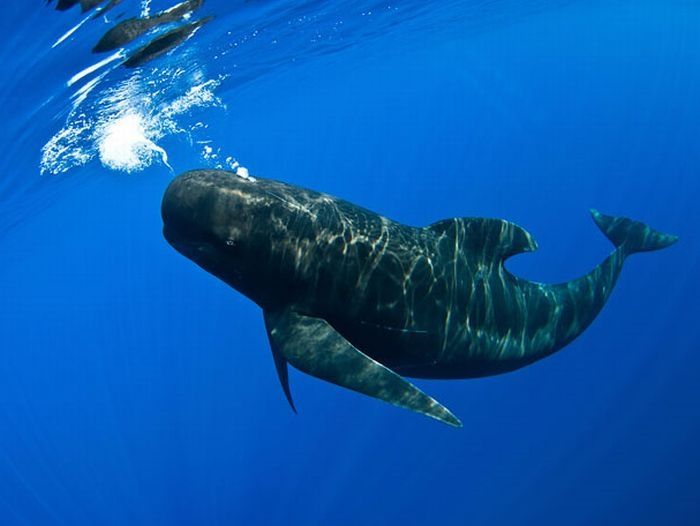|
|
Pilot Whale, Strait Of Gibraltar
|
Pilot Whales are amongst the most common and most widely distributed of the marine mammals in the cetacean order. The Long-finned species prefers slightly cooler waters than the Short-finned and is divided into two populations. The larger group is found in a circumpolar band in the Southern Ocean running from approximately 20° S to 65° S. It may be sighted off the coasts of Chile, Argentina, South Africa, Australia and New Zealand. There are estimated to be in excess of 200,000 individuals in this group. The second population is much smaller and inhabits the North Atlantic Ocean, in a band that runs from South Carolina in the United States across to the Azores and Morocco at its southern edge and from Newfoundland to Greenland, Iceland and northern Norway at its northern. It is also present in the western half of the Mediterranean Sea. The Short-finned species is more populous. It is found in temperate and tropical waters of the Indian, Atlantic and Pacific Oceans. Its population overlaps slightly with the Long-finned Species in the western Atlantic. There are 150,000 individuals in the eastern tropical Pacific Ocean. There are estimated to be more than 30,000 animals in the western Pacific, off the coast of Japan. Both species prefer deep water.
The long-term survival prospects of both these species look good. Indeed in its Red List of Threatened Species the IUCN lists both the Long-finned and Short-finned as "Lower Risk; conservation dependent". The Long-finned Pilot Whale has traditionally been hunted by whalers by the process of "driving" – where many fishermen and boats gather in a semicircle behind a pod of whales, that has been sighted close to shore, and slowly drive them towards a bay. When close enough stones attached to lines from the boats are thrown into the water behind the whales, driving them towards the beach where they become stranded and are slaughtered. This practice was common in both the nineteenth and twentieth centuries. Currently only the Faroe Islands operates such a cull. Statistics have been kept for the drives in the Faroe Islands for centuries, and in the 1980s around 1,500 individuals were killed each year in this manner, declining in the 1990s to under a thousand. The Short-finned Pilot Whale has also been hunted for many centuries, particularly by Japanese whalers. In the mid-1980s the annual Japanese kill was about 2,300 animals. This had decreased to about 400 per year by the 1990s. Killing by harpoon is still relatively common in the Lesser Antilles and Sri Lanka. Due to poor record-keeping it is not known how many kills are made each year, and what effect this has on the local population. Both species are also collaterally caught and killed in longline and gill-nets each year.
|
|









